
Paradise

he Maldives is known worldwide for its beautiful turquoise waters and luxury resorts — a dream destination for weddings and honeymoons. But for Maldivian artist and designer, Fathimath Salah, the archipelago nation is so much more than its postcard-perfect image. It is her home and her ultimate source of inspiration.
“For tourists, the Maldivian aesthetic might be turquoise waters and palm fronds. But from a local’s perspective, there are so many beautiful things that most people don’t see.”
— Fathimath Salah, Island Bazaar
“Like the intricate stonework in the mosques, or the traditional reed mats from the southern atolls,” says Salah, who runs Island Bazaar boutique, home to locally designed lifestyle and interior products. Salah not only curates products that celebrate the island spirit, culture, and history of the Maldives, she designs some of them as well. “There is some Maldivian influence or heritage in all our designs.“



From the capital city of Malé – the former home of kings and sultans – to the unique local language, Dhivehi, the Maldives has a wealth of culture for visitors to explore.






In Malé, the Old Friday Mosque is one of the finest examples of Maldivian architecture and traditional carving techniques.
The mosque, built in 1658, is intimately tied to the nation’s Islamic history and is a display of Maldivian craftsmanship and skills. It is constructed out of pale white limestone — soft and carvable when wet but extremely sturdy when dry — and inscribed with verses from the Quran.
“One of my first designs that became popular incorporated (the patterns seen in) hirigaa. Hirigaa is what we call limestone. All of our ancient mosques are carved out of this material; they have these really intricate patterns,” explains Fathimath.
“I used patterns from the hirigaa mixed with the colors of our waters to create designs that appeal to both locals and visitors."


Step away from the stunning Maldivian architecture and get lost with the locals among the vibrant fruit and vegetable stalls of The Malé Local Market where you can grab a slice of refreshing papaya, or sample the unique bitterness of betel leaves.
“The market has many textures, patterns, and colors, like a postcard of everything we have on our islands,” says Salah, who visits the market regularly for fresh produce, and surprisingly, design inspiration.
Many of the products at the market come from the archipelago’s coconut palms, one of the Maldives’ most important natural resources. It is used in almost all aspects of everyday life, from cooking to boat building. A tip for the quintessential Maldivian experience: Indulge in fresh coconut water at one of the market stalls.



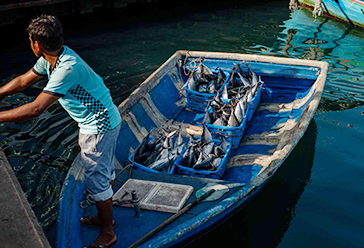
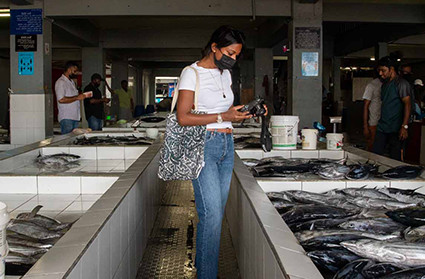
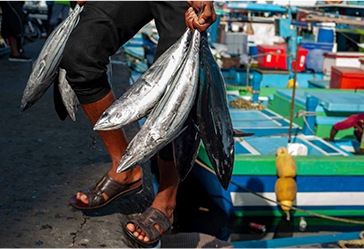
The Maldives is a seafaring nation, and the neighboring Fish Market shows the daily catch in full glory.
In this lively marketplace, visitors can buy fish caught that morning, straight off the boats and get a glimpse of the island’s fishing industry. For an expert guide to the local cuisine, Salah recommends joining a food tour with Secret Paradise Tours. These food tours typically last around four hours, and start with ingredient shopping at the two markets before guests are invited to prepare and enjoy a meal with a local family.



The Maldives is a seafaring nation, and the neighboring Fish Market shows the daily catch in full glory.
In this lively marketplace, visitors can buy fish caught that morning, straight off the boats and get a glimpse of the island’s fishing industry. For an expert guide to the local cuisine, Salah recommends joining a food tour with Secret Paradise Tours. These food tours typically last around four hours, and start with ingredient shopping at the two markets before guests are invited to prepare and enjoy a meal with a local family.


An hour’s flight from the capital is Gadhdhoo Island in the Huvadhoo Atoll, home to traditional thundu kunaa mat makers.
Here, craftswomen weave reeds into intricate mats. In the past, these mats were sent as tributes to the Maldivian Royal Family, right up until the islands became a republic in 1968.
“This is the only atoll where the reed mats are made,” says Salah. “It is culturally rich, and I’d recommend it to anyone who wants a deeper understanding of Maldivian tradition.”
With only a few resorts in this part of the Maldives, Gadhdhoo may seem off the beaten track. But Salah believes visitors who take the time to journey this way will be richly rewarded with a unique Maldivian experience. To get to Gadhdhoo, take a speedboat ride from Maavarulu Airport, across the crystal waters of the Huvadhoo Atoll, the largest atoll in the Maldives. Stay in a guesthouse on nearby Vaadhoo Island, famous for some of Huvadhoo Atoll’s best surf breaks.
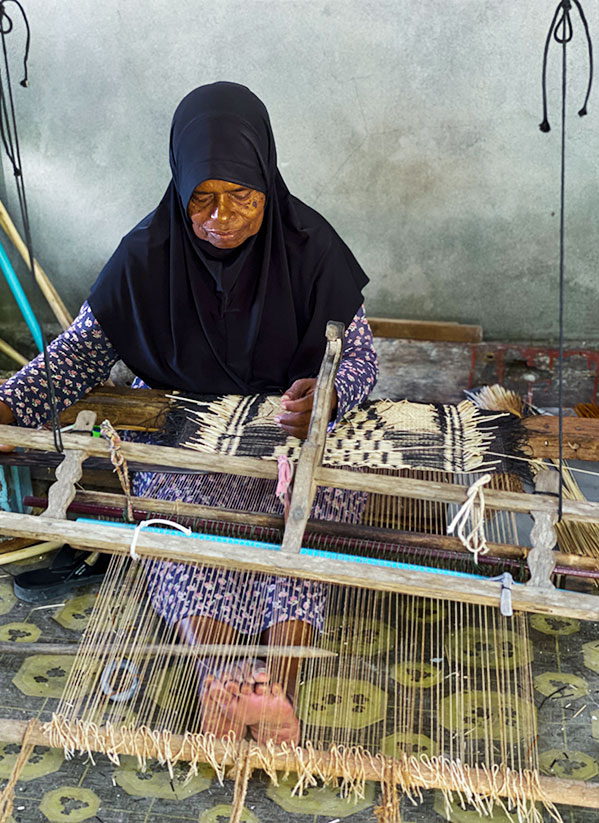


Below the water’s surface, the Maldives is teeming with life. Growing up to 32 feet in length, whale sharks are the archipelago’s most iconic creatures; these gentle giants congregate in the tropical waters of the Indian Ocean. Around 400 are spotted each year in the waters of the South Ari Atoll, only 60 miles from Malé.
“Every time I’ve dived there, I’ve seen a whale shark,” says Fathimath. “It’s that common and there are the manta rays as well.”
Travelers keen to visit the South Ari Atoll can catch a two-hour speedboat ride from the Velana International Airport in Malé to Dhigurah Island. They can choose to complete the entire journey by sea or take a 20-minute domestic flight to Maamigili Airport. Whale sharks can be spotted all year round; the Maldives is one of the few places in the world where this is possible as whale sharks typically migrate with the changing seasons. Visitors can see manta rays from October through May, and turtles and dolphins visit the islands throughout the year.
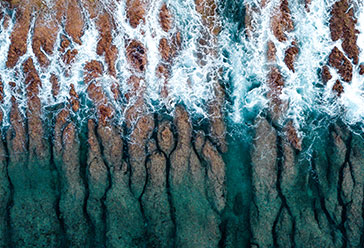
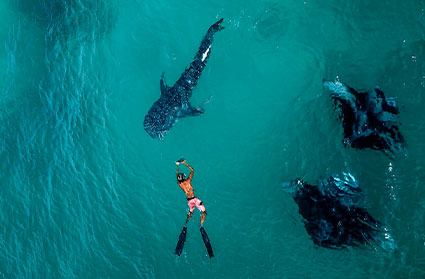
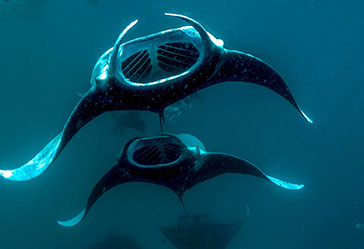
Below the water’s surface, the Maldives is teeming with life. Growing up to 32 feet in length, whale sharks are the archipelago’s most iconic creatures; these gentle giants congregate in the tropical waters of the Indian Ocean. Around 400 are spotted each year in the waters of the South Ari Atoll, only 60 miles from Malé.
“Every time I’ve dived there, I’ve seen a whale shark,” says Fathimath. “It’s that common and there are the manta rays as well.”
Travelers keen to visit the South Ari Atoll can catch a two-hour speedboat ride from the Velana International Airport in Malé to Dhigurah Island. They can choose to complete the entire journey by sea or take a 20-minute domestic flight to Maamigili Airport. Whale sharks can be spotted all year round; the Maldives is one of the few places in the world where this is possible as whale sharks typically migrate with the changing seasons. Visitors can see manta rays from October through May, and turtles and dolphins visit the islands throughout the year.



Set amid blue lagoons, the Maldives is magnetic, in its beauty and in the warmth of its people.
“I think you’ll truly fall in love with the Maldives if you experience more than that. We are very hospitable, so if a visitor arrives at any local island, you’ll be greeted with open arms,” says Salah.
In light of the Covid-19 situation in global flux and restricted international travel, the recommendations in this article are for future considerations.
Rotate Device
